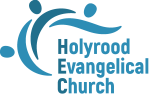Our mission at Holyrood is to be a disciple-making community. It’s worth taking a moment to think about the meaning of this statement. The statement exposes two common errors in how a lot of people think about discipleship.
First, disciple-making is often thought to be a solitary activity. We often imagine that discipleship is something that happens primarily in a one-to-one environment. A lot of discipleship material is written this way. There is no shortage of Bible studies that picture the ideal setting for discipleship being two people who meet to chat over coffee. Without at all disparaging the usefulness of such methods, we need to recognise that one-to-one discipleship is a secondary, not primary, form of helping another person grow in faith. Rarely in the New Testament do we see discipleship taking place in groups of two. In most cases, the context of spiritual learning is a small community. There is good reason for this. Human beings are social animals. A lot of the disciplines, virtues, and blessings of the Christian life require a community to practice and experience. Gathered worship is a good example of this. There is no way to replicate a corporate act of worship in a one-to-one setting. A prayer meeting provides another example. We learn about prayer differently from listening to the prayers of a group of people than we do from reading a book or praying alone.
A second error is thinking that disciple-making is the responsibility of a select group of professionals or specially gifted individuals. In truth, all of us have a part to play in helping to nurture the beliefs and practices of other believers. A key part of such “communication” occurs through culture. We often hear that “more is caught than taught”. The statement is a platitude because it is true. A new believer will learn a lot more about what it means to follow Jesus by being placed in a healthy environment of discipleship than he or she will learn from merely reading books or sitting down for a “formal” session over coffee. The best way to learn about Christian hospitality is by experiencing hospitality in the homes of other Christians. The best way to grow in prayer is by being planted among Christians who live as if prayer is nothing less than the breath of life.
It’s important to grasp the significance of this point. To be a disciple-making community does not mean that each member of HEC will be arranging “one-to-one” meetings with other people in the church. Rather, to be a disciple-making community means two things: first, to participate in the essential discipleship life of the community and, second, to encourage new people to move toward the centre of the same communal life.
Moving People to the Right
There is a phrase that I want every member of HEC to know and understand: “moving people to the right.” At Holyrood, we are blessed with a strong shared life of discipleship. This life is defined by four core practices, namely, Sunday morning worship, home groups, the prayer meeting, and Equip. Those of us that participate in all four of these practices have a healthy diet of word, prayer, and fellowship.
And, yet, at Holyrood, we also have a problem. A lot of our new people are not moving beyond attendance on Sunday mornings. This is not good for them or for us. We will never be able to fulfil the Great Commission of raising up mature disciples unless we are able to draw new people into the broader spiritual culture of our community. Sunday morning, by itself, is a subsistence ration for the week. If we want new people to grow in the wisdom and character needed to be light in the midst of darkness, they will need more than a nice welcome, a weekly sermon, and a warm cup of coffee.
Now, how will we overcome this problem? The only solution is for each member to take on the challenge of “moving people to the right.” We all need to be nudging new people to move from the periphery of our community (i.e. Sunday morning attendance) toward the centre of our common life.
Such progression is what we mean by “moving people to the right.” It’s important to know that there is a hierarchy of practices at Holyrood. Of first importance is Sunday morning; second is being involved in home groups; third is the prayer meeting; and forth is Equip. Our vision as a church needs to be one of seeing people shift from mere Sunday attendance to being fully embedded in the culture of our congregation.
No doubt, someone will be thinking, “But what does this look like in practice?” The answer to this question is simple. We all need to look for opportunities to chat winsomely to others about things like home groups and the prayer meeting. Rarely does a person show up to a new meeting uninvited. Most people have a fear of the unknown. Do we want new people to come to our prayer meeting? If so, we need to talk to them about how the prayer meeting could be a blessing to their lives? Do we want to see new faces in our home groups? We need to share testimonies of the difference home group involvement can make in the midst of trials and spiritual difficulties.
Such is the work of “moving people to the right” and – more importantly – of being a disciple-making community.
By Joe Barnard



